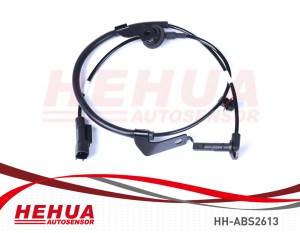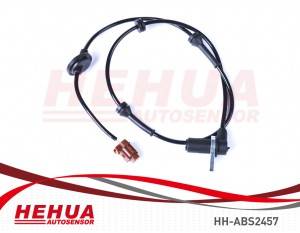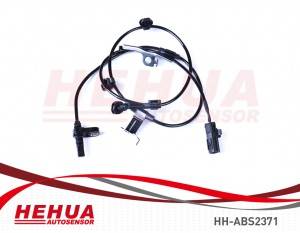ABS Sensor HH-TS1011
HEHUA NO: HH-TS1011
OEM NO:
0011539520
0001539520
0001539520
0011539520
0011531620
0011531820
0011531420
0011532020
APPLICATION:
MERCEDES-BENZ ACTROS (1996/04 – 2002/10)
MERCEDES-BENZ ACTROS MP2 / MP3 (2002/10 – /)
VEHICLE SPEED SENSOR (VSS)
VSS gives the onboard computer information about the vehicle speed. The sensor operates on the principle of the Hall Effect and is usually mounted on the tachometer or in the gearbox.
Speed sensors based on the Hall effect
Speed sensors with mechanical tenon
Inductive speed sensors
Working principle of different types of VSS
- With Hall Effect
VSS is supplied with +12V from the ignition key. When the tachometer speed cable rotates, the Hall switch is turned on and off consecutively, sending a rectangular signal to the onboard computer. The frequency of this signal indicates the speed of the car.
- Speed sensor with mechanical tenon
The signal from the rotating drive wheel has a rectangular form. The signal voltage varies from 0V to +5 V or 0V to a value close to the nominal of the car battery. Pulses duty cycle is between 40% and 60%.
- Inductive speed sensor
The signal from the rotating drive wheel has a sinusoidal form (alternative current). The signal changes depending on the speed of the wheels as every inductive sensor, for example, the ABS sensor.
Procedure for verification of functionality of the VSS sensor
NOTE: This algorithm describes how to check the most common VSS sensor, the Hall Effect type.
VSS is usually mounted in the gearbox.
Check the VSS connector for corrosion or mechanical damages.
Make sure connector pins are firmly fit in their places and whether they make good contact to the VSS sensor.
Pull off the protective rubber muff from the VSS sensor connector.
Find the power supply, the ground and the signal terminals.
Connect the oscilloscope GND probe to the chassis ground.
Connect the active end of the oscilloscope probe to the signal terminal of the VSS.
Signal is generated when the drive wheels of the car are spinning. This can be achieved in the following ways:
Push the car forward.
Lift the car at stand or jack so that the drive wheels can rotate freely.
Rotate the wheels by hand to get impulses.
On the oscilloscope screen you must observe the following signal (fig. 2).
Possible damages:
Interruptions or lack of signal – voltage/duty cycle
Disconnect the VSS sensor connector and turn on the ignition key.
Attach the oscilloscope probe to the signal terminal and measure the voltage. Its value should be from 8.8 to 10V.
Also check the voltage of the power supply terminal. Its value should be lower than the nominal of the car battery.
Check the GND connection of VSS sensor.
If everything is normal, probably the fault is in the VSS sensor or the speed cable does not rotate because it is broken or the gearbox is damaged.
Lack of signal voltage
Check the voltage at the onboard computer connector terminals:
If voltage of the onboard computer is normal, check the signal circuit conductivity and the diode in the circuit between the onboard computer and the VSS sensor.
If voltage of the onboard computer is missing, check all power supply voltages and all connections to GND of the onboard computer. If there is no problem, doubt about a damage of the onboard computer remains.









